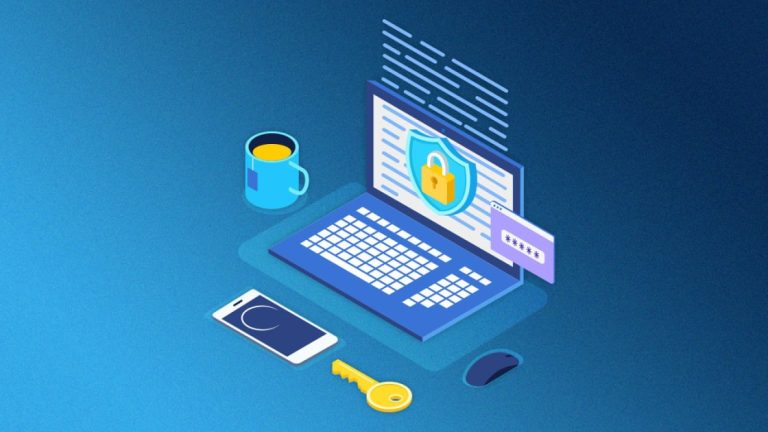How to Handle Account Lockouts and Security Questions

In today’s interconnected digital world, where our lives are increasingly intertwined with the internet, safeguarding our online presence has never been more crucial. With the rise of cyber threats and data breaches, protecting our personal information and digital assets has become a top priority. Among the myriad of challenges users face in this digital landscape, dealing with account lockouts and security questions stands out as a significant concern. In this comprehensive guide, we will delve deep into strategies to handle these situations effectively, empowering users to fortify their online security.
Understanding Account Lockouts:
Account lockouts are security measures implemented by service providers to safeguard user accounts from unauthorized access attempts. They are triggered when a user enters incorrect login credentials multiple times, indicating a potential security breach or a genuine mistake. The purpose of account lockouts is to thwart malicious login attempts and protect users’ sensitive information from falling into the wrong hands.
Identifying Common Causes of Account Lockouts:
To effectively address account lockouts, it’s essential to understand their underlying causes. These can range from simple typographical errors in login credentials to more serious issues such as forgotten passwords or coordinated hacking attempts. Common causes of account lockouts include:
Forgotten Passwords: Users may forget their passwords, especially if they have multiple accounts with different login credentials.
Automatic Lockout Policies: Service providers often implement automatic lockout policies that temporarily restrict access to an account after a certain number of failed login attempts.
Expired Credentials: Passwords that are expired or require periodic resets can lead to inadvertent lockouts.
Malicious Login Attempts: Hackers may employ various tactics, such as brute-force attacks or credential stuffing, to gain unauthorized access to user accounts.
Security Policies: Stringent security policies implemented by organizations may enforce lockouts after a certain number of failed login attempts.
Typographical Errors: Users may inadvertently mistype their passwords or usernames, triggering an account lockout.
Implementing Strong Password Management Practices:

One of the most effective ways to prevent account lockouts and enhance online security is by implementing robust password management practices. Encourage users to create strong, complex passwords that are difficult to guess or brute-force. Advise them to avoid using easily guessable information such as names, birthdays, or common phrases. Additionally, recommend the use of password managers to securely store and manage login credentials for various accounts.
Utilizing Multi-Factor Authentication (MFA):
Multi-factor authentication (MFA) is a powerful security measure that adds an extra layer of protection to user accounts. In addition to entering a password, users are required to provide additional verification, such as a one-time code sent to their mobile device or email address. By implementing MFA, service providers can significantly reduce the risk of unauthorized access and mitigate the impact of account lockouts caused by forgotten passwords or compromised credentials.
Providing Adequate Support Channels:
When users encounter account lockouts, it’s essential to provide them with accessible support channels for assistance. This may include online chat support, email support, or a dedicated helpline staffed with knowledgeable support agents. Prompt and effective support can help users resolve their login issues quickly and regain access to their accounts without undue delay.
Educating Users on Security Questions:
Security questions are commonly used as a secondary authentication method to verify a user’s identity. However, the security of this approach depends heavily on the user’s choice of questions and answers. Educate users on the importance of selecting strong, unique security questions and avoiding common answers that can be easily guessed or obtained through social engineering tactics. Encourage them to choose questions with answers that are memorable yet difficult for others to guess.
Encouraging Regular Security Checkups:
Regularly reminding users to review and update their security settings can help prevent account lockouts and enhance overall security. Encourage users to periodically review their security questions, update their contact information, and check for any suspicious account activity. Remind them to enable account notifications, so they are promptly alerted to any unauthorized access attempts or suspicious changes to their accounts.
Implementing Account Lockout Policies:
Service providers should implement account lockout policies that strike a balance between security and user convenience. These policies should specify the maximum number of login attempts allowed before an account is locked and the duration of the lockout period. Additionally, consider implementing mechanisms to automatically unlock accounts after a certain period or providing users with the option to unlock their accounts through alternative authentication methods.
Offering Alternate Authentication Methods:
In cases where users are unable to access their accounts due to lockouts, offering alternate authentication methods can help expedite the resolution process. This may include sending temporary login links via email or SMS, verifying the user’s identity through additional security questions, or allowing users to reset their passwords through verified contact information. By providing users with multiple avenues for account recovery, service providers can minimize the inconvenience caused by account lockouts and enhance the overall user experience.
Monitoring and Analyzing Account Activity:
Regularly monitoring and analyzing account activity can help detect and prevent unauthorized access attempts before they lead to account lockouts. Implement robust logging mechanisms to track login attempts, account changes, and suspicious activities. By proactively monitoring account activity, service providers can identify potential security threats and take appropriate measures to mitigate them. Additionally, provide users with access to their account activity logs, so they can review them for any signs of unauthorized access or suspicious behavior.
Deciphering Security Questions

Security questions serve as an additional layer of authentication, allowing users to recover their accounts if they forget their passwords. While seemingly straightforward, these questions can sometimes be tricky to answer, especially if you haven’t revisited them since initially setting up your account.
Account lockouts and security questions are critical components of online security, designed to protect user accounts from unauthorized access and mitigate the risk of data breaches. By implementing strong password management practices, utilizing multi-factor authentication, and providing adequate support channels, users can effectively handle account lockouts and enhance the security of their online accounts. Remember, online security is a shared responsibility, and by staying informed and vigilant, we can collectively defend against cyber threats and safeguard our digital identities.





